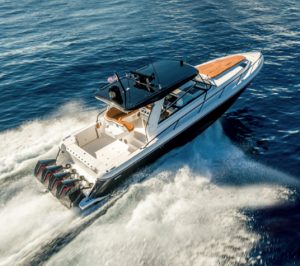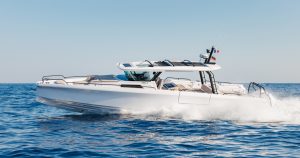The Ultimate Guide to Yacht Tenders
A yacht is a symbol of luxury, prestige, and the desire to explore the world's seas and oceans. Yet, no matter how grand or technologically advanced your yacht may be, it is incomplete without one essential accessory - a yacht tender. This Ultimate Guide to Yacht Tenders will provide a comprehensive insight into the world of tenders, highlighting their importance, different types, key considerations when buying one, and maintenance tips.
Understanding the Role of a Yacht Tender
In essence, a yacht tender, also known as a dinghy, is a smaller support vessel used primarily for short trips. Yacht tenders serve multiple roles - they transport people and supplies between the yacht and the shore when the yacht cannot dock due to its size or depth of the water. They also serve as emergency lifeboats and offer recreational activities such as water sports.
Different Types of Yacht Tenders
Yacht tenders come in different shapes, sizes, and functions. Here are the most common types:
-
Rigid Inflatable Boats (RIBs): These are the most common type of tenders. They feature a rigid hull combined with inflatable side tubes, offering excellent stability and capacity while remaining lightweight.
-
Jet Tenders: These are powered by a water jet instead of an outboard engine, making them safer for water sports as there is no propeller. They are also highly maneuverable.
-
Luxury Tenders: Often custom-built, these tenders match the style and sophistication of the primary yacht. They may feature amenities like cabin space, high-end finishes, and advanced tech.
-
Sport and Utility Tenders: These tenders prioritize function over form. They are designed for specific tasks like fishing, diving, or transporting large amounts of cargo.
-
Landing Craft Tenders: Characterized by a bow that can be lowered for easy on and off loading of goods and people, they are perfect for beach landings.
What to Consider When Buying a Yacht Tender
Choosing a yacht tender involves balancing several factors:
Purpose: Is it primarily for transportation, watersports, or exploration? The tender's main purpose will dictate the style, size, and capabilities required.
Size: The tender has to fit on or inside the yacht. Thus, the size of the yacht and the storage space available are critical considerations.
Weight: Yachts have weight restrictions. The combined weight of the tender, its fuel, and equipment should not exceed the yacht's capacity.
Capacity: The tender must be able to accommodate the number of people you expect to transport at any given time.
Performance: For those interested in speed, tenders with larger motors or jet drives are preferable. For calm waters and short trips, a less powerful model may suffice.
Matching Style: If you want the tender to match the aesthetic of the yacht, this could influence your decision on the brand or custom design of your tender.
Maintaining Your Yacht Tender
Like any vessel, a yacht tender requires regular maintenance to keep it in top shape:
Regular Cleaning: Regular cleaning prevents the growth of marine organisms and prolongs the life of the tender.
Engine Care: Regular servicing, oil changes, and checking for any potential issues in the engine ensure longevity and reliability.
Safety Checks: Always check the condition of safety equipment on board, including life jackets, flares, and fire extinguishers.
Inflation Levels: For inflatable tenders, it's important to monitor inflation levels regularly.
Storage: When not in use, tenders should be covered and stored in a dry place to prevent UV damage and weathering.
Conclusion
A yacht tender is more than just a
means of getting from point A to point B; it's a vital accessory that enhances the yachting experience. It's a vessel that allows you to explore those hard-to-reach places, engage in thrilling water sports, carry out tasks like shopping or sightseeing onshore, and even serve as a stylish extension of your main yacht during glamorous events.
The selection process can be quite intensive given the variety of yacht tenders available in the market today, but it should not be daunting. With clear understanding of your needs, budget, and the factors to consider, finding the perfect tender for your yacht should be an exciting journey.
It's also worth noting that the purchase is just the beginning; keeping your tender in top-notch condition through regular maintenance is equally important. This will ensure the tender serves you well, remains safe, and prolongs its lifespan, giving you value for your investment.
In the end, a well-chosen, well-maintained yacht tender will open up a new world of possibilities, making your yachting adventures even more unforgettable. Whether you're jetting off to a secluded beach, pulling up to a waterfront restaurant, or enjoying an adrenaline-filled water sport, the right tender will provide the flexibility and freedom you need to make the most of your time at sea.











